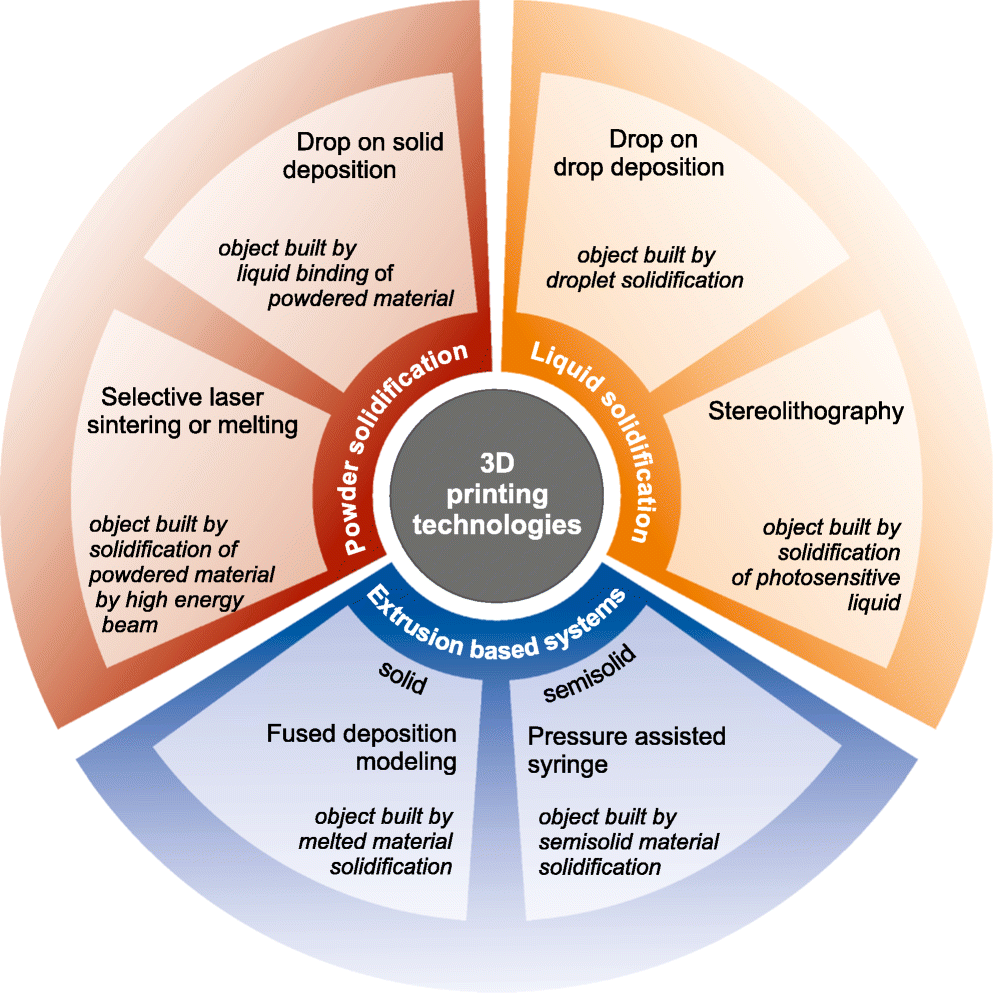At the beginning of 2018 we reviewed the applications of 3DP for drug delivery and drug testing. Demand for controlled-release pharmaceuticals sometimes referred to as 4D pharmaceuticals because.
 3d Printing In Pharmaceutical And Medical Applications Recent Achievements And Challenges Pharma Excipients
3d Printing In Pharmaceutical And Medical Applications Recent Achievements And Challenges Pharma Excipients
18 rows The introduction of 3D printing technology in the pharmaceutical industry has opened new.
3d printing in pharmaceutical industry. One opportunity in the pharmaceutical industry is the use of 3D printing to make tissue samples. If youd like to learn more about these 3D Printers Pick3DPrinter has a list of the best SLA and Resin 3D Printers that are used in the pharmaceutical industry. 3D Printing Impacting Regenerative Medicine.
3D Printing in Pharmaceutical Sector. In regard to cust Advantages and challenges of pharmaceutical 3D printing Pharma Excipients. 3D printing is also making headway in the pharmaceutical industry as a way to produce 3D groups of cells for use in high throughput screening.
The birth of the 3D printed pill. The technology will improve in the commercial context as innovation continues. Compared to typical 2D cell assays 3D groups offer.
Selective Laser Sintering 3D Printing An Overview of the Technology and Pharmaceutical Applications. Spritam is developed by US pharmaceutical company Aprecia and is far from a. The 3D PRINTING technology has caught the attention of medical devices industry and pharmaceutical industry due to its applications on various platform in health care industry.
Modern technology has enabled the development of novel dosage forms for targeted therapy. Since 3D printing is in its infancy in the pharmaceutical industry its unique value creation is not yet through cost reductions but through proprietary innovations in technology which for us are US-based said West. The MarketWatch News Department was not involved in the creation of this content.
In 2015 the first ever 3D printed pill Spritam was approved by the FDA in the US and released for general use in 2016. Fused deposition modeling FDM three-dimensional 3D printing is being increasingly explored as a direct manufacturing method to product pharmaceutical solid dosage forms. Although 3D printing 3DP has long been an integral part of industries such as aviation and automotive its use in healthcare especially the pharmaceutical industry is relatively new and currently receiving close attention.
The pharmaceutical industry is moving ahead at a rapid pace. The utilization of 3DP as manufacturing process might provide some potential benefits for the pharmaceutical industry as well as for patients. Its manufacturing based on layers will reduce general small-batch manufacturing costs in comparison with traditional production methods.
3D printing for the pharmaceutical industry is potentially huge. May 21 2021 Market Stats News via COMTEX -- According to a research report 3D Printing Medical Implants Market. The world has already seen printed anatomical prostheses hearing aids heart valves biological tissues and many others.
Alina Dvoretskaya describes how 3D technologies are used in pharmacology and the benefits these offer to the healthcare industry. One of the most significant benefits of 3D printing in pharmaceuticals was the fact that it could enable manufacturers to create specific dosages for each patient. The potential pharmaceutical applications of 3D printing has been discussed for several years leading up to the FDAs approval of the first prescription medication in March of 2016.
Without a doubt we can deem that the life expectancy of people has increased. However the fabrication of novel dosage forms at industrial scale is limited and. In recent years additive manufacturing also commonly known as 3D printing has been recognised as the ideal technology for applications that require intricate geometries or personalisation.
The team at the Department of Materials Science and Engineering used 3D printing to construct tablets using pharmaceutical-grade materials. Were trying to create tissues or organs that are representative of a human Wallace says noting that success in this area would reduce the need for animal testing and lead to a clearer understanding of drug performance. The short-run properties of 3D manufacturing lend themselves to patient-specific.
Three-dimensional 3D technology is considered one of the promising areas of medicine. 3D Printing In The Pharmaceutical Industry Where Does It Currently Stand. Today the industry is still looking at how best to deploy that technology in any meaningful way.
